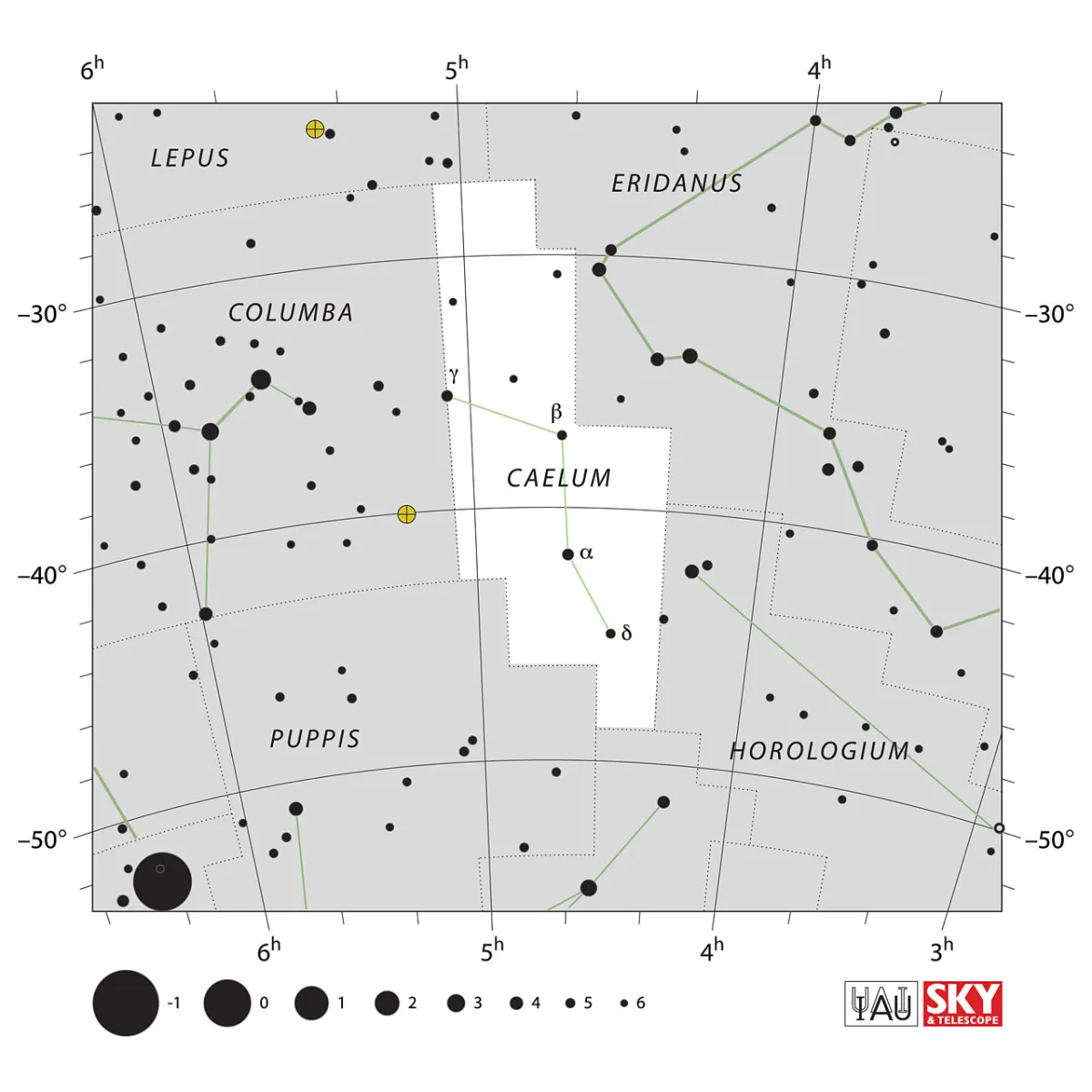Constellation Caelum (Engraving Tool)

Properties
Caelum is an inconspicuous, almost insignificant constellation at the end of Eridanus, southwest of Canis Maior and does not contain any stars brighter than 4.5 mag. It has an area of 125 square degrees and culminates at midnight on around November 30th. In Central Europe, it only just comes over the southern horizon. [9, 15]
| IAU Name | Caelum |
| IAU Genitive | Caeli |
| IAU Abbr. | Cae |
| English Name | Engraving Tool |
| Culmination at local midnight | 4 December |
| Season (Latitude +0.0°) | August … May |
| Right Ascension (J2000.0) | 04h 19m 32s … 05h 05m 01s |
| Declination (J2000.0) | -48° 44' 18" … -27° 01' 30" |
| Area | 125 deg2 |
| Neighbours (N↻) | Lep, Eri, Hor, Dor, Pic, Col |
Deep-Sky Object Descriptions
Catalogues
History
The constellation was introduced around 1752 by French astronomer Abbé Nicolas Louis de Lacaille, who lacked a little imagination. While all sorts of legendary heroes cavort in the constellations of the northern hemisphere, those in the southern hemisphere are more like the contents of a toolbox. The Caelum represents an engraving tool or burin, which was used by artisans to work on metal and ivory. [7]